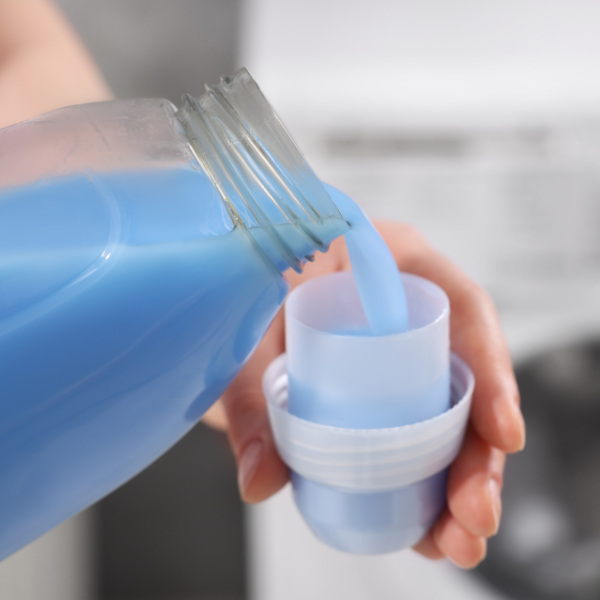Fabric softener usage is becoming an increasingly popular topic in the bustling city of New York. In a city renowned for its fast-paced life, where individuals strive for efficiency without compromising on quality, the role of fabric softeners in daily laundry care cannot be overstated. The "Big Apple" holds high standards for everything, and laundry care is no exception.
Fabric softeners serve a dual purpose of making clothes feel softer to the touch and infusing them with a pleasant, lasting fragrance. This has proven to be a game-changer for New Yorkers who appreciate comfort and freshness in their clothes, from office attire to leisure wear. Given the city's climate variations, from harsh winters to humid summers, fabric softeners also assist in reducing static cling in clothing
With an array of brands and types available, each with its unique composition and scent, the New York market for fabric softeners caters to diverse needs and preferences. However, as sustainability and environmental consciousness become more embedded in the New Yorker ethos, many are turning to eco-friendly, biodegradable options that are gentle on the fabric, skin, and the planet.
The usage of fabric softeners in New York goes beyond just personal preference, it's a lifestyle choice for many. For New Yorkers who value both the tangible and intangible benefits of using fabric softeners, it's more than just an add-on in their laundry routine, it's an essential element of it. Whether you are a New Yorker striving for a softer touch, a refreshing scent, or a more eco-friendly laundry routine, the fabric softener market in this vibrant city has something for everyone.
ADVANTAGES AND DISADVANTAGES OF USING FABRIC SOFTENER
Fabric softeners are widely used in laundry routines due to their ability to enhance the texture, smell, and longevity of clothing. However, like most products, fabric softeners also come with their share of drawbacks. Here's a balanced overview of the advantages and disadvantages of using fabric softeners.
Advantages
Softness: Fabric softeners can significantly improve the softness of clothes, providing a comfortable feel to the wearer. This can be particularly beneficial for heavier fabrics like cotton and wool.
Scent: Most fabric softeners impart a pleasant, long-lasting fragrance to your clothes, contributing to a feeling of freshness.
Reduced Static: Fabric softeners can help reduce static cling, especially in synthetic fabrics. This is particularly useful in dry or cold climates where static is more likely to occur. Easier Ironing: The use of fabric softeners can make clothes easier to iron by reducing wrinkles.
Protection: Fabric softeners can protect clothes from wear and tear, helping to preserve their color and shape for longer.
Disadvantages
Residue Build-up: Fabric softeners can leave a residue on clothes and also inside the washing machine. This can affect the machine's performance over time.
Reduced Absorbency: Fabric softeners can decrease the absorbency of certain fabrics like towels and athletic wear, affecting their functionality.
Skin Irritation: Some people may be allergic to the fragrances or ingredients in fabric softeners, which can lead to skin irritation or allergies.
Environmental Impact: Many fabric softeners contain chemicals that are not biodegradable and can be harmful to the environment. This is a significant consideration for those trying to adopt more sustainable practices.
Incompatibility with Certain Fabrics: Fabric softeners should not be used on certain fabrics, such as silk or certain types of sportswear, as they can damage the fabric structure.
While fabric softeners can add softness, fragrance, and reduce static in your clothes, their use can lead to potential issues such as reduced absorbency, residue build-up, skin irritation, and environmental impact. It's essential to weigh these pros and cons based on personal needs, fabric type, and sustainability considerations before deciding to use fabric softeners.
HOW TO CHOOSE A FABRIC SOFTENER FOR LAUNDROMAT?
When selecting the appropriate fabric softener for a laundromat, various factors come into play, ranging from the characteristics of the fabrics washed most often to the personal preferences of the customers, and from cost-effectiveness to the environmental implications. Understanding the types of fabric most commonly handled at the laundromat is crucial. Fabric softeners may interact differently with various materials, enhancing some while potentially damaging others. For instance, while many fabrics may benefit from the application of fabric softeners, they might decrease the absorbency of items like towels and athletic wear. Moreover, some materials, like silk or certain types of sportswear, might suffer damage due to fabric softeners.
Specific preferences of customers should be catered to. Do your customers value a long-lasting fresh scent, additional softness, or environmentally friendly products? Allergies or sensitivities might lead some customers to favor unscented options. Insights into the customers' preferences can be gleaned through surveys or casual interactions.
Another key consideration lies in the concentration levels of commercial fabric softeners. While fabric softeners with high concentration levels might appear more costly at first glance, their cost-effectiveness could be greater in the long run since less quantity is needed per laundry load. In an era of increasing sustainability consciousness, the environmental impact of a product is a significant factor. Many customers today favor businesses that make environmentally conscious choices.
Therefore, a biodegradable fabric softener free from harmful chemicals could be an excellent choice, meeting customers' needs while also reducing environmental harm.

Join The Discussion!